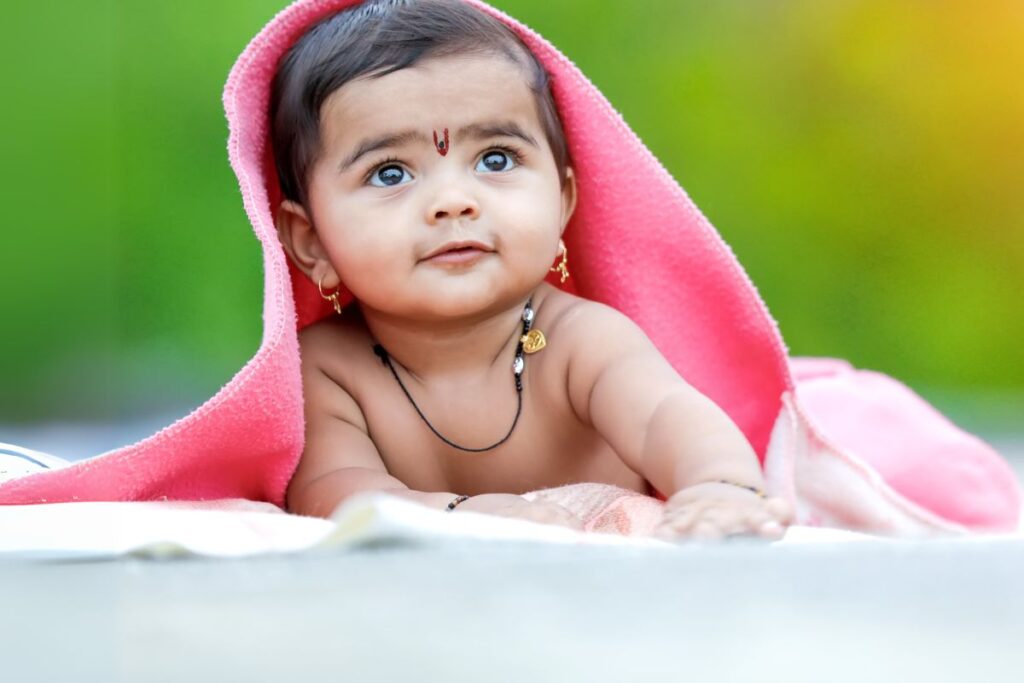Is applying kajal to your child’s eyes a harmless tradition, or is it putting their delicate eye health at risk? While kajal (also known as kohl) has been used for centuries, especially in many South Asian cultures, it’s crucial to assess whether this popular cosmetic is really safe for young eyes.
What is Kajal?
Kajal is a dark eye makeup that is traditionally used to enhance the eyes, giving them a bold, dramatic look. In some cultures, it’s applied from infancy as a sign of protection or beauty. Typically, kajal is made from soot, almond oil, and other natural ingredients, but in some cases, it contains harmful chemicals such as lead, parabens, and phthalates, depending on the brand and how it’s produced. It’s important to understand what exactly is in the kajal you’re using before applying it to sensitive eyes.
Is Kajal Safe for Children’s Eyes?
The safety of applying kajal to children’s eyes is a very controversial topic. While it’s widely used in traditional settings, there are health risks that you may not be aware of, especially when it comes to children’s delicate eyes and skin.
1. Eye Irritation and Infections:
The skin around children’s eyes is more sensitive than that of adults. Irritation, redness, or a stinging feeling may occur from using kajal carelessly. Moreover, the child may also develop eye infections like blepharitis (inflammation of the eyelids) or conjunctivitis if the kajal gets into their eyes.
2. Lead Exposure:
Some kajal products, particularly cheaper, unregulated brands, may contain lead. This toxic metal is dangerous for children and can cause developmental issues, learning disabilities, and even more serious health problems. Lead exposure can accumulate in the body over time, affecting the nervous system and overall health. The FDA has raised concerns over the presence of lead in kajal and similar cosmetic products.
3. Tear Duct Blockage:
Kajal can accidentally block the tear ducts when it is applied close to the eyes. This can result in excessive tearing and watery eyes. In addition to irritation, a clogged tear duct may cause swelling or infections in some situations.
4. Skin Allergies:
Children’s skin is far more sensitive than adults, and the ingredients in kajal may trigger allergic reactions. These could range from mild symptoms like redness and itching to more serious symptoms like swelling or hives.
Is Kajal Safe for Use on Children?
If you must use kajal on children, it is vital to choose high-quality, regulated brands that are hypoallergenic, lead-free, and made for sensitive skin. Avoid using kajal daily, as overuse can increase the risk of infection and irritation. Also, keep a check that, for preventing a future infection or irritation to the eyes, kajal is applied away from the eyes.
Alternatives to Kajal for Children:
● Natural and Safe Products: Choose makeup or natural eye products that are specifically made for children’s delicate skin. There should not be any harsh chemicals, fragrances, or dyes in these products.
● Avoid Overuse: Even if you want to apply kajal to your child’s eyes, just don’t apply it on a daily basis.
● Proper Hygiene: To prevent bacterial growth and any pain, check that the kajal applicator is clean before applying and wipe it off before sleeping.
FAQ Section
Is kajal safe for children to use?
It can be safe if kajal is made with high-quality, lead-free ingredients and isn’t applied regularly. Avoid using kajal daily and choose hypoallergenic brands to minimise the risks.
Can kajal cause eye infections in children?
Yes, Kajal can cause eye irritation or infections if it gets into the eyes or is applied improperly
How do I know if kajal contains lead?
Check out FDA-approved brands that are hypoallergenic, and if they have clearly mentioned on the packet that they are free from lead and other harmful chemicals, then you are good to go.
How HealthPil Can Help:
At HealthPil, we prioritise the safety of your child’s eye health. Our pediatric ophthalmologists can offer consultations to help you choose the safest cosmetic options for your child and provide guidance on eye hygiene to prevent infections and irritation caused by cosmetic products.
Disclaimer:
This article is for informational purposes only and should not replace professional medical advice. Always consult a healthcare provider for proper diagnosis and treatment for your child’s eye health.

